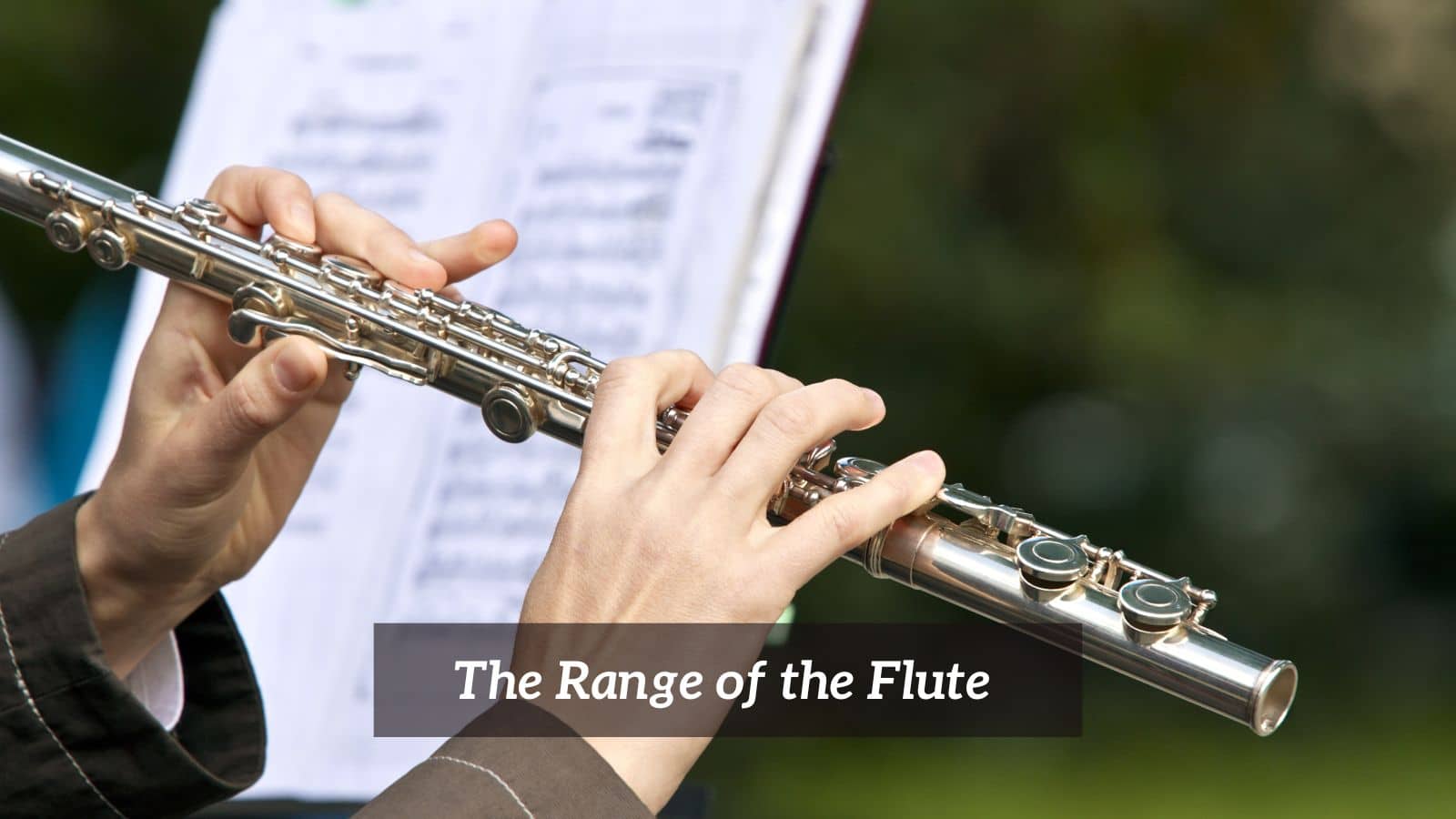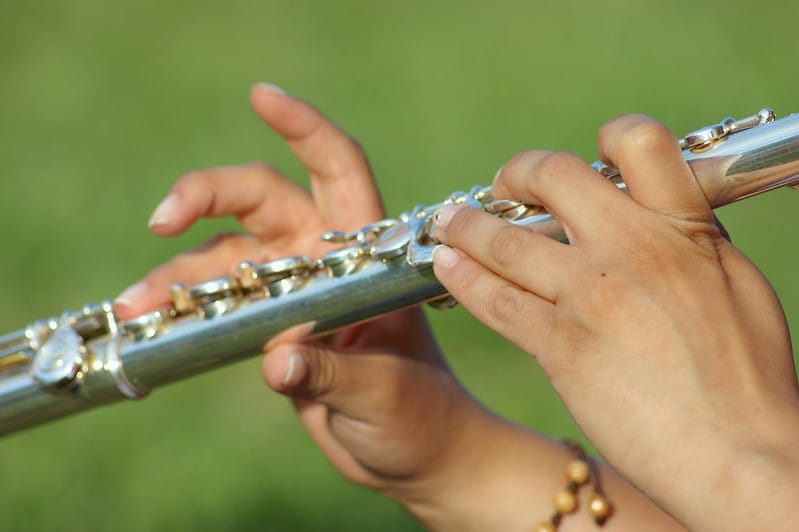
The flute is a beautiful musical instrument with a wide range of pitch. Though it is typically known for being one of the highest voices in the orchestra, it also has a colorful lower range, making it a great choice for many different musical genres.
The flute can also produce a broad variety of timbres, depending on how the performer chooses to manipulate the tone. As a result, the flute is a popular pick for both solo and ensemble performances.
The flute falls under the woodwind category, which means that it produces sound by vibrating air through a narrow tube. The flute is held vertically, and the performer blows across the tone hole on the headjoint to make a sound.
The pitch is changed by opening or pressing closed the different keys along the length of the instrument.
To play in the low register, the performer can play with a somewhat relaxed airspeed, but to play in the higher registers of the instrument, the performer must increase his or her airspeed and abdominal support.
Range of the Flute
The low register
The lowest note on the flute varies between instruments. On most student-level flutes, the lowest note is a C4, which is middle C on a piano.
Some professional flutists choose to play on flutes that maintain a C as its lowest pitch. However, most advanced players purchase instruments that can reach a B3, one semitone below C4.
Many twentieth century pieces incorporate low Bs, so this is a helpful add-on to have. To accommodate the low B, the footjoint is slightly longer with a second roller key that closes an additional key at the end of the flute.
The longer an instrument is, the lower its range – that is why bassoons are so much bigger than flutes!
It can be a challenge to play in the low register of the flute. Sometimes, the sound produced in the low register is not as strong as in other octaves, and it is hard to immediately reach the center of the note with a clear articulation.
Other times, the note might even crack up the octave, sounding in the middle register instead. There are many ways to improve the low register sound. In the practice room, flutists can explore what works best for them.
It is often useful to look in the mirror when practicing to see the relationship between the embouchure (the position of the mouth when playing flute) and the tone hole.
If the tone hole is too covered or too exposed, the sound produced will be respectively thin or airy.
One can also experiment with the direction and pressure of the air – slowing the airspeed down might help produce low notes on the flute, as well as making sure that the air isn’t directed too far up rather than into the instrument.
It is helpful to practice long tones in the low register, working downward from notes that already feel comfortable.
Once the low register is mastered, the performer has unlocked new possibilities on the instrument. The low register is often an underrated and underappreciated range on the instrument.
Try listening to flute repertoire such as the second movement of the Poulenc Sonata, the second movement of the Ibert Concerto, or the opening of Enesco’s Cantabile et Presto to hear the majestic low range of the flute.
The middle register
The middle register of the flute is probably the easiest to play. When beginning flutists start learning the instrument, they begin in the middle register.
If one divided the range of the flute into three even parts, the middle register would span from C5 – C6.
However, a few notes below C5, such as G4, A4, and B4, can sometimes be considered the middle register, as the physicality behind producing those notes is more akin to the middle octave than the low one.
The middle register may still have some problems projecting, though it will not be as difficult to play loudly as it is in the low register.
The middle register is typically produced with a slightly faster airspeed than the low register, but it should not feel overly rapid or pressured.
The angle of the air will likely be more across the embouchure hole. The biggest problem with middle register notes is cracking, which occurs when the note isn’t quite centered in the middle register and partially speaks up or down a register.
This often happens in articulated passages. Once again, the solution can usually be found in air speed, pressure, and angle. One can try relaxing and speeding up the airspeed and adjusting the angle of the air to find the “sweet spot” for the note.
The middle register can be heard in almost any piece written for the flute, but for some pieces that particularly showcase it, listen to these two classical pieces for solo flute: Debussy’s Syrinx or Bach’s Partita in A minor.
The high register
Now we come to the register that the flute is best known for, its high register. The third octave of the flute spans from C6 to C7, but it is now within the norm for modern pieces to include up to D7.
In more experimental contemporary works, an E7 or F7 might appear, but this is very uncommon in standard repertoire.
In order to produce high notes on the flute, the airspeed must be significantly increased from the middle register, and flutists must support the sound using their abdominal muscles.
It is often a struggle for beginners to reach these high notes on the instrument, but it will come with time and diligent practice. One excellent way to learn how to produce a full sound in the upper register is through harmonics.
These are achieved by fingering a lower note and overblowing it to produce higher pitches. This will help with intonation as well as learning and memorizing the amount of speed and pressure needed to successfully reach the highest notes on the flute.
The high register is often used to depict certain imagery, such as a bird, which can be heard in numerous works such as Prokofiev’s Peter and the Wolf or Saint-Saens’ Voliere.
The flute is also the highest speaking instrument in the orchestra (other than its smaller and higher cousin, the piccolo), and can be used to reach exciting effects, such as in Prokofiev’s Classical Symphony, which frequently forces the flutists up D7s.
Though this high music can be tough, it’s also incredibly rewarding, and as earned the flute its reputation for being both a technical and lyrical force of an instrument.


